#doubleday & mcclure company
Text
Milestone Monday

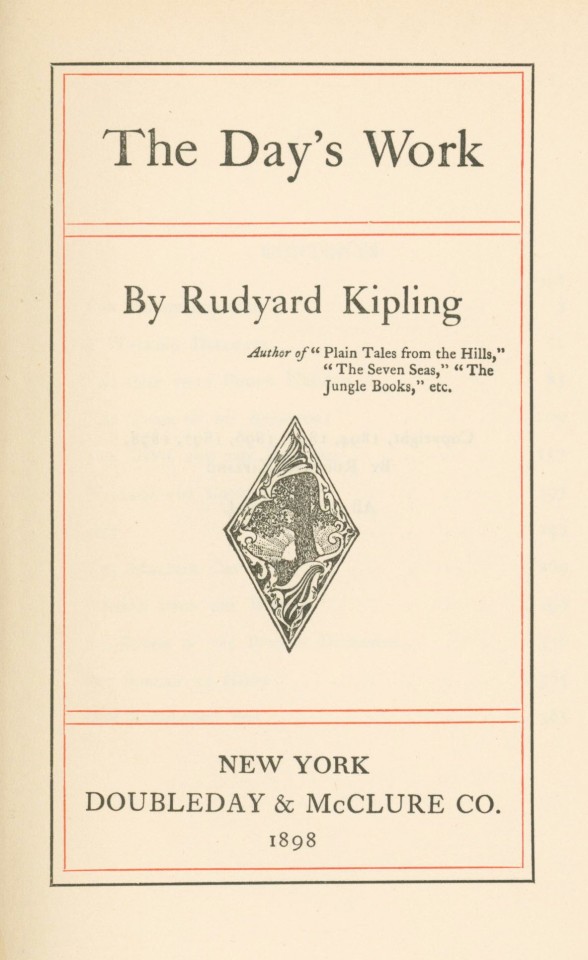


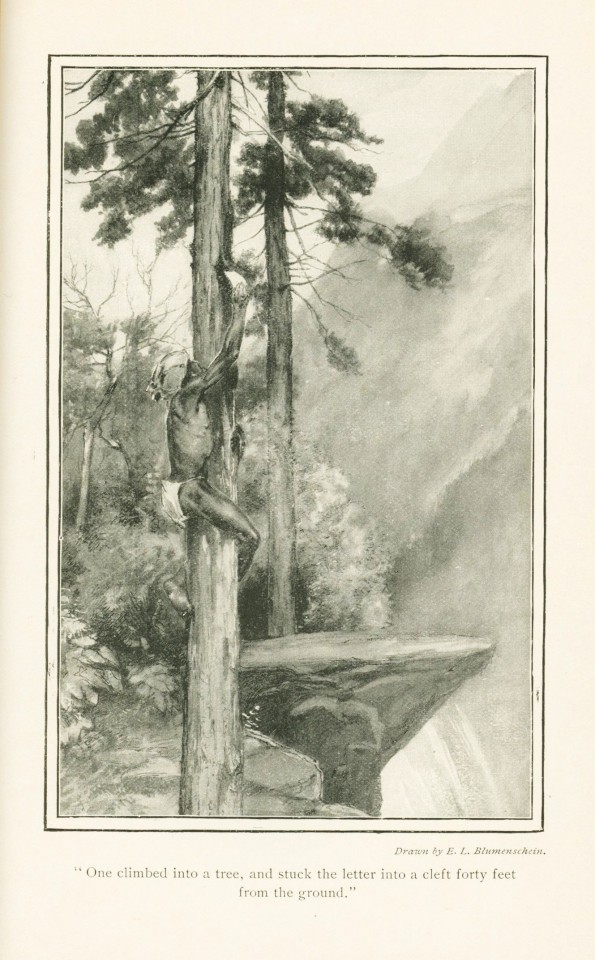




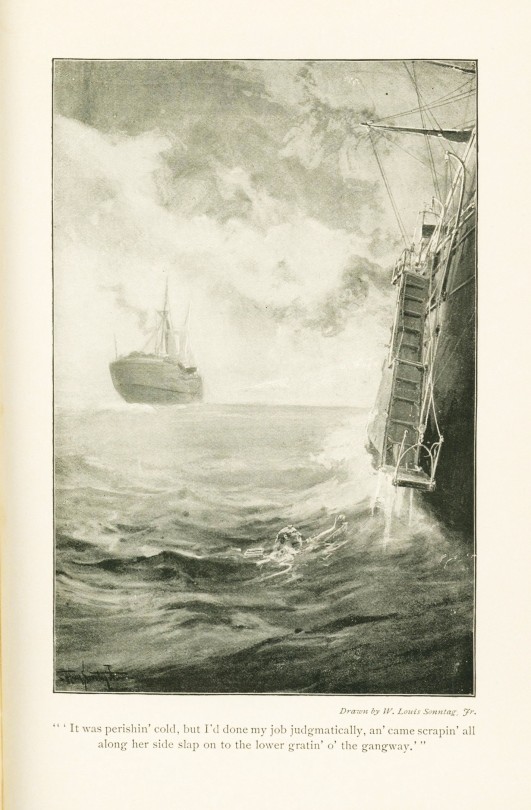
January 8th is the birthday of Frank Nelson Doubleday (1862-1934) who at age ten bought his own printing press to create advertisements and local Brooklyn news circulars and seventy-five years later was known as the co-founder of the largest publisher in the United States. At fifteen years old, Doubleday went to work at Charles Scribner’s Sons, eventually publishing Scribner’s Magazine and heading their subscription book department. After eighteen years, Doubleday left the company and partnered with Samuel Sidney McClure (1857-1949) to open their own publishing venture Doubleday & McClure Company in 1897.
Over the years, Doubleday & McClure Company worked with numerous notable authors and would evolve through a dizzying number of partnerships, acquisitions, and name changes while it grew into an international communications company, eventually settling into a merger with Knopf Publishing Group under Penguin Random House in the early 2000s. In its infancy, still known as Doubleday & McClure, the company found great success with Rudyard Kipling’s (1865-1936) bestseller The Day’s Work.
Published in 1898, The Day’s Work contains thirteen fictional short stories accompanied by illustrations throughout. The stories were written between 1893 and 1896 while Kipling was living in his Bliss Cottage in Vermont and simultaneously working on The Jungle Book. Unlike many of Kipling’s other collections, there are no poems dividing the stories within The Day’s Work. The black and white illustrations within the collection were drawn by four different artists including, William Dodge Stevens (1870-1942), William Louis Sonntag Jr. (1869-1898), Ernest Leonard Blumenschein (1874-1960), and William Ladd Taylor (1854-1926); each leaning into their strengths to support Kipling’s vivid narrative.
Read other Milestone Monday posts here!
– Jenna, Special Collections Graduate Intern
#milestone monday#milestones#frank nelson doubleday#doubleday & mcclure company#charles scribner's sons#samuel sidney mcclure#penguin random house#knopf publishing group#rudyard kipling#the day's work#the jungle book#william dodge stevens#william louis sonntag jr.#ernest leonard blumenschein#william ladd taylor
20 notes
·
View notes
Photo



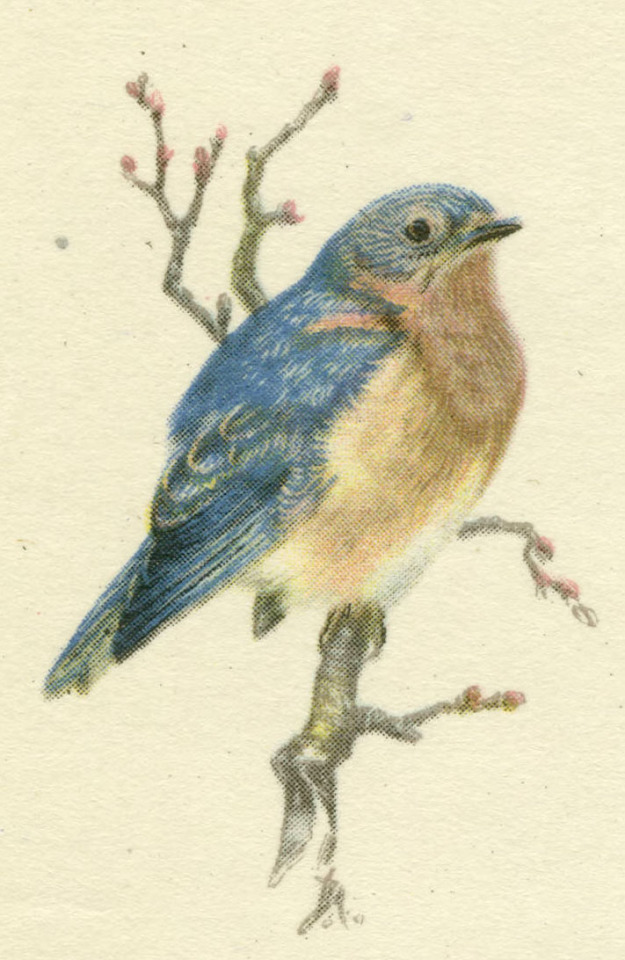

Stationery Saturday: Nature Guide Advertising
This Stationery Saturday we present you with this colorful undated letter from Nelson Doubleday, president of the Doubleday, Page & Co. publishing company (known today as Doubleday) from 1922 until 1946. Founded in 1897 by Frank Nelson Doubleday (Nelson Doubleday’s father) and magazine publisher Samuel McClure, Doubleday has published the works of many well-known writers such as Rudyard Kipling, Margaret Atwood and John Grisham.
This undated letter advertises a set of illustrated nature guides published by Doubleday, including The Butterfly Guide, Tree Guide, Flower Guide, and Land Birds Bird Guide.
This letter from Nelson Doubleday can be found in Box 1 of the Emil Seidel Papers, 1906-1940 at the UWM Archives.
#UWM Archives#Stationery Saturday#Nature Guide#Emil Seidel#Doubleday#Doubleday Publishing#Nelson Doubleday#Bird Guide#Tree Guide#Butterfly Guide#Flower Guide#Stationery#nature illustration#Nature Stationery#Lizzie
14 notes
·
View notes
Photo

The Spirit of Sweetwater. Hamlin Garland. Philadelphia: Curtis Publishing Company. New York: Doubleday & McClure Co., [1898]. First edition.
A romance set in a frontier mining town in Colorado. A longer version of the story was published in 1906 under it's original magazine title, "Witch's Gold."
19 notes
·
View notes
Text
TODAY'S BIRTHDAY
Frank Nelson Doubleday (1862)
Doubleday was an American publisher best known for founding the Doubleday & McClure Company. Doubleday was so fascinated with printing as a boy that he saved up and bought his own printing press, and he began working at famed publishing house Charles Scribner's Sons at age 14. In 1897, he formed his own company with Samuel S. McClure, publisher o McClure's Magazine, and their firm became a prominent publishing house.
0 notes
Text
Books on Gypsies -- Public Domain
Roberts, Samuel, 1763-1848. The Gypsies: Their Origin, Continuance, And Destination. 5th ed. London: Longman, Brown, Green, and Longmans, 1842.
https://catalog.hathitrust.org/Record/012503311/Cite
Macfie, R. A. Scott (Robert Andrew Scott), 1868-1935. Gypsy Lore. London: Sherratt & Hughes, 1908.
https://catalog.hathitrust.org/Record/100330756/Cite
MacRitchie, David, 1851-1925. Scottish Gypsies Under the Stewarts. Edinburgh: D. Douglas, 1894.
https://catalog.hathitrust.org/Record/001261646/Cite
Chambers, William, 1800-1883. Exploits And Anecdotes of the Scottish Gypsies: With Traits of Their Origin, Character, And Manners. Edinburgh: W. Brown, 1886.
https://catalog.hathitrust.org/Record/008691584/Cite
Macfie, Robert Andrew Scott. With Gypsies In Bulgaria. Liverpool: H. Young, 1916.
https://catalog.hathitrust.org/Record/007681459/Cite
Brockie, William, 1811-1890. The Gypsies of Yetholm: Historical, Traditional, Philological, And Humorous. Kelso: J. & J.H. Rutherfurd, 1884.
https://catalog.hathitrust.org/Record/008691583/Cite
Kester, Paul, 1870-1933. Tales of the Real Gypsy. New York: Doubleday and McClure company, 1897.
https://catalog.hathitrust.org/Record/100363114/Cite
McCormick, Andrew. The Tinkler-gypsies of Galloway. Dumfries, [Scotland]: J. Maxwell, 1906.
https://catalog.hathitrust.org/Record/102427508/Cite
0 notes
Text
Gemini May World Dracula Day
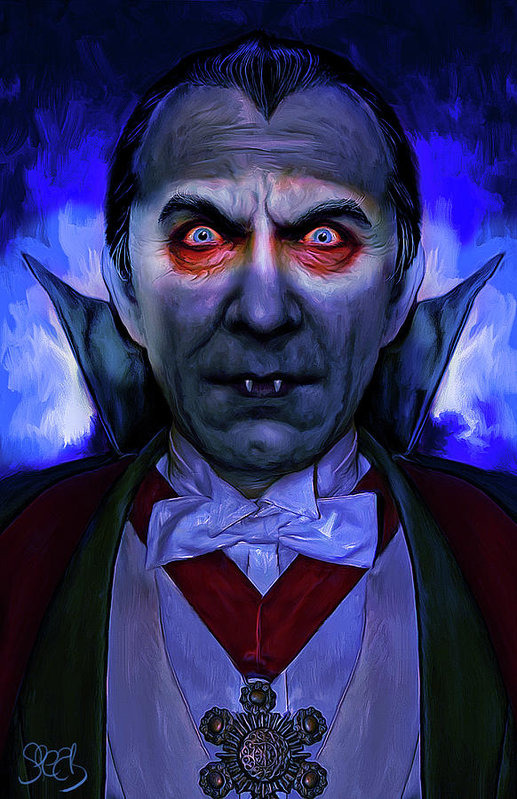
By shirleytwofeathers
May 26 is World Dracula Day which commemorates Bram Stoker’s Gothic horror novel Dracula, which was first published on May 26 in 1897, by Archibald Constable and Company in Britain. It sold for six shillings and came bound in yellow cloth with red lettering. It was first printed in the United States two years later, by Doubleday & McClure of New York City. Although not the first novel about vampires, it became a model for the genre, and laid the foundation for future vampire stories, with its introduction of the character Count Dracula.
The quintessential vampire, Count Dracula has inspired tens of films and stories the world over, not to mention the virtual immortality of the character during as a beloved Halloween character. For all of these reasons, it’s undeniable that this icon of horror more than deserves his own little holiday so the world can show its appreciation for his contributions to the worlds of cinema and literature over the centuries. So put on your fangs, and let’s sink out teeth right into this, shall we?
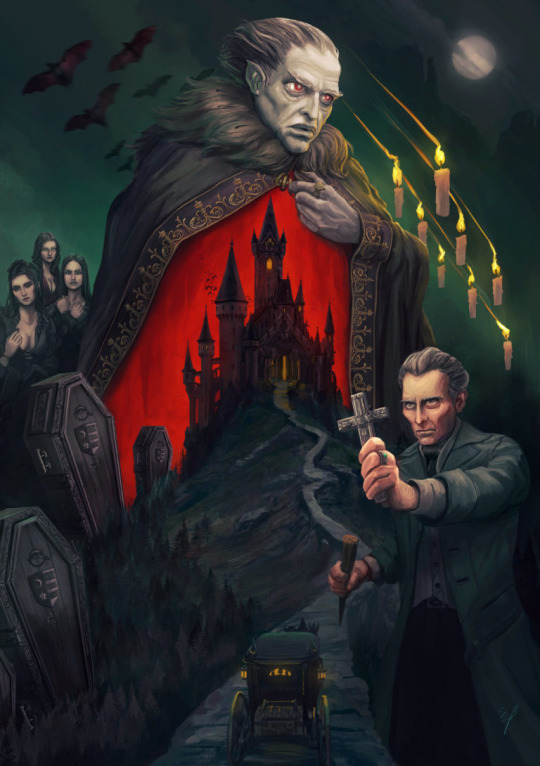
About The Book
The book follows (spoiler alert!) an English lawyer named Jonathan Harker as he travels to Transylvania to meet Count Dracula at his castle, Castle Dracula. To Harker, Dracula appears pale and off-kilter. The strangeness of Dracula is more apparent after he lunges at Harker’s throat after Harker cuts himself while shaving. Harker eventually finds out that Dracula is a vampire who needs to drink human blood to survive. Afterward, Dracula locks Harker in the castle and flees to England with 50 boxes of dirt (it is believed he needs dirt from his home country to stay healthy). As Dracula heads to England to search for new blood, Harker eventually escapes from the castle.
Meanwhile, Mina, Harker’s fiancée, is visiting her friend Lucy in England. One night, Mina finds Lucy sleepwalking by a graveyard. Mina believes she sees a creature hovering over Lucy for a moment, and then notices two red marks on Lucy’s neck. Lucy becomes sick over the next few days and is then cared for by a Dr. Seward and by Dr. Abraham Van Helsing, before eventually dying. Afterward, strange reports begin surfacing that a creature has been attacking children in the area.
Jonathan Harker and Mina are reunited and married. Harker tells Dr. Helsing about his experience with Dracula, and Helsing then believes Lucy contracted vampirism from him and is the one attacking children. They dig up her corpse, cut off her head, put a stake through her heart, and stuff her mouth with garlic. They then turn their focus to Dracula and try to destroy his boxes of dirt. He escapes back to Transylvania, where they find him buried in the last box of dirt. They cut off his head and stab him through the heart, causing him to collapse into dust.

The Origins Of Dracula
Stoker spent years researching vampires before writing Dracula. During that time, he was particularly influenced by “Transylvanian Superstitions,” an essay by Emily Gerard that was published in 1885. Stoker worked at the Lyceum Theatre in London from 1878 to 1898. The theater was headed by Henry Irving, who Stoker based Dracula’s mannerisms on. It was even Stoker’s hope that Irving would play Dracula in a stage adaptation, but it did not happen.
According to one theory, Prince Vlad III of Wallachia (Romania) was the real-life inspiration behind Stoker’s gothic horror novel. An extremely cruel and merciless ruler, Vlad earned the nickname “Vlad the Impaler” for the many ways he tortured his opponents as well as people who betrayed him when they were captured. As can be guessed from his nickname, impaling was his favourite method of execution, and it is thought that he killed up to 100,000 people during his reign, and was infamous for the “forests” of impaled victims he left behind when he won a battle. One unsubstantiated account says that he dipped bread in his victims’ blood and ate it in front of them as they died on stakes.
Born in Transylvania in the fifteenth century, he was also called Drăculea, which means “Son of Dracul.” Indeed, his father was known as Dracul, a name that derived from the knightly order he belonged to—the Order of the Dragon (the Latin word draco means dragon). In modern Romanian, drac means “devil.”
It is believed that Stoker picked the name Dracula after learning this more modern translation. Some believe that the only connection between Vlad III and Dracula are their names. The connection of his character with vampirism was made by Bram Stoker around the 1890’s, and has become a permanent element of pop culture since then.
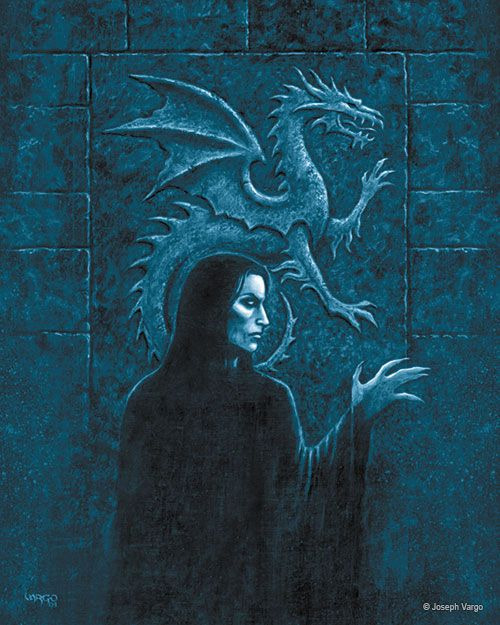
What does it mean?
Dracula has been interpreted in numerous ways. Some have interpreted the story as an allegory of the fear that western Europeans had of eastern Europeans coming into their area. Hence, the story of someone coming from Transylvania—in Romania—to London and wreaking havoc on its residents. This theme appeared in other novels of the time.
Some have seen the book as a reaction to the conservative and patriarchal norms of the Victorian period, and as an exploration of suppressed sexual desire. Some also have seen the book as being about the relationship between the past and future, with Dracula symbolising a primitive past that challenges modernity.

The Historical Vampire
The concept of vampirism dates back thousands of years. The ancient Greeks, Hebrews, Egyptians and Babylonians all had legends telling hair-raising tales of demon-like undead creatures that lived off of the blood of the living.
Tales of the undead consuming the blood or flesh of living beings have been found in nearly every culture around the world for many centuries. Today we know these entities predominantly as vampires, but in ancient times, the term vampire did not exist; blood drinking and similar activities were attributed to demons or spirits who would eat flesh and drink blood; even the devil was considered synonymous with the vampire.
Almost every nation has associated blood drinking with some kind of revenant or demon, from the ghouls of Arabia to the goddess Sekhmet of Egypt. Indeed, some of these legends could have given rise to the European folklore, though they are not strictly considered vampires by historians when using today’s definitions.
Hebrews, ancient Greeks, and Romans had tales of demonic entities and blood-drinking spirits which are considered precursors to modern vampires. Despite the occurrence of vampire-like creatures in these ancient civilisations, the folklore for the entity we know today as the vampire originates almost exclusively from early 18th-century Southeastern Europe, particularly Transylvania as verbal traditions of many ethnic groups of the region were recorded and published. In most cases, vampires are revenants of evil beings, suicide victims, or witches, but can also be created by a malevolent spirit possessing a corpse or by being bitten by a vampire itself. Belief in such legends became so rife that in some areas it caused mass hysteria and even public executions of people believed to be vampires.
In India, tales of vetalas, ghoul-like beings that inhabit corpses, are found in old Sanskrit folklore. Although most vetala legends have been compiled in the Baital Pachisi, a prominent story in the Kathasaritsagara tells of King Vikramāditya and his nightly quests to capture an elusive one. The vetala is described as an undead creature who, like the bat associated with modern-day vampirism, hangs upside down on trees found on cremation grounds and cemeteries. Pishacha, the returned spirits of evil-doers or those who died insane, also bear vampiric attributes.
The Hebrew word “Alukah” (literal translation is “leech”) is synonymous with vampirism or vampires, as is “Motetz Dam” (literally, “blood sucker”). Later vampire traditions appear among diaspora Jews in Central Europe, in particular the medieval interpretation of Lilith. In common with vampires, this version of Lilith was held to be able to transform herself into an animal, usually a cat, and charm her victims into believing that she is benevolent or irresistible. However, she and her daughters usually strangle rather than drain victims, and in the Kabbalah, she retains many attributes found in vampires.
A late 17th- or early 18th-century Kabbalah document was found in one of the Ritman library’s copies of Jean de Pauly’s translation of the Zohar. The text contains two amulets, one for male (lazakhar), the other for female (lanekevah). The invocations on the amulets mention Adam, Eve, and Lilith, Chavah Rishonah and the angels—Sanoy, Sansinoy, Smangeluf, Shmari’el, and Hasdi’el. A few lines in Yiddish are shown as dialog between the prophet Elijah and Lilith, in which she has come with a host of demons to kill the mother, take her newborn and “to drink her blood, suck her bones and eat her flesh”. She informs Elijah that she will lose power if someone uses her secret names, which she reveals at the end.
Other Jewish stories depict vampires in a more traditional way. In “The Kiss of Death”, the daughter of the demon king Ashmodai snatches the breath of a man who has betrayed her, strongly reminiscent of a fatal kiss of a vampire. A rare story found in Sefer Hasidim #1465 tells of an old vampire named Astryiah who uses her hair to drain the blood from her victims. A similar tale from the same book describes staking a witch through the heart to ensure she does not come back from the dead to haunt her enemies.
More about Vampires can be found at The Powers That Be.
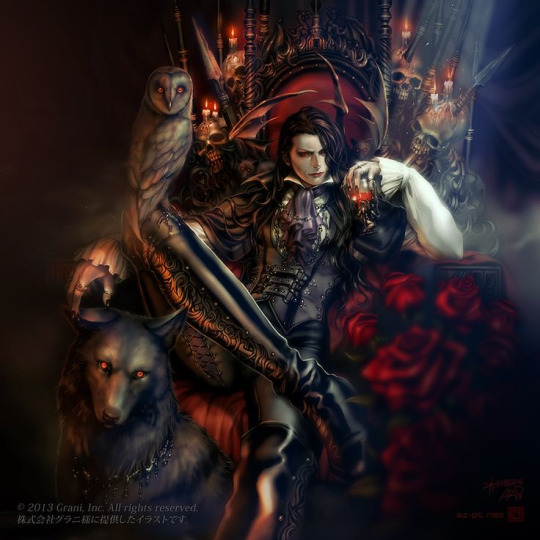
How to celebrate Dracula Day
Celebrating all things Dracula why not throw a party and get your friends round for the ultimate film binge. Ideas for creating the perfect atmosphere include giving your party a Gothic feel by making sure all of your decorations are either black or blood red, the table setting is rather sophisticated, everyone is dressed elegantly and wears fangs, hanging up plenty of bat and spider web decorations, and serving plenty of blood red drinks.
It would also be perfect to watch one or more of the classic vampire movies to have been made, such as the 1958 British classic titled simply “Dracula”, and starring the incredibly impressive Christopher Lee as the aristocratic titular character. Other movie choices include “Nosferatu”, a 1922 German expressionist horror film, and “Interview with the Vampire” starring Tom Cruise, Brad Pitt, and a young Kirsten Dunst.
If it’s something more lighthearted you’re looking for, Roman Polański’s “The Fearless Vampire Killers, or Pardon Me, But Your Teeth Are in My Neck” will keep everyone entertained. Lesser known, but equally fun movies include Suck (one of my personal favourites), and Jesus Christ Vampire Hunter.
If you don’t plan on hosting a party, that does not mean you have to miss out on Dracula day—take the time to delve into the world created by Bran Stoker in his acclaimed novel. Reading a good book has never hurt anyone, and in the era social media’s 140-character blurbs of text, it is ever more important to keep the art of literature alive.
If you’ve already read it, consider tackling Anne Rice’s “Vampire Chronicles”, a series of 11 critically acclaimed books that follow influential vampires all throughout history. Stephen King’s “Salem’s Lot”. As you can see, there is no shortage of ways to celebrate the vampires of the world this Dracula Day!
Vampire Magick:
If you get really excited about all this talk of vampires, blood, and the undead, you might even be interested in exploring spells to “become a vampire.” Alternatively, you might want to play around with some protection against vampires spells, vampire prevention spells, or even a peaceful coexistence spell. They can all be found in the Book of Shadows, and Gypsy Magick and Lore.
Sources:
Days Of The Year
Checkiday
Wikipedia
https://shirleytwofeathers.com/The_Blog/pagancalendar/category/may-holidays/
1 note
·
View note
Photo

ON THIS DAY January 15, 1900, the Brooklyn Daily Eagle reported, “’Dracula’ by Bram Stoker is the name of a book from the pen of the accomplished manager of the Lyceum Theater, London, and of the dramatic companies headed by Sir Henry Irving and Ellen Terry. The publishers are the Doubleday & McClure Company, New York, and the chaste and attractive work of the printer and binder is a worthy setting of the clear thought, the weird imagination and the reverential spirit of a volume of originality, interest and power. The story has been issued both in Great Britain and America for several weeks, but more than acknowledgement of its appearance has not yet been made in many quarters, for it requires, while it rewards, very careful reading, since its point of view or of treatment is novel, profound and startling.” #Dracula #BramStoker #OTD #novels @brooklyndailyeagle https://www.instagram.com/p/BsutLCUle6q/?utm_source=ig_tumblr_share&igshid=110v4ou8uhp4q
0 notes
Text




The Jungle, 1906
•Jurgis Rudkus e Ona Lukoszaite, um jovem casal recém chegado a Chicago, imigrantes da Lituânia, estabelecem residência, com outros membros de suas famílias que também imigraram, na área chamada de Packingtown, região que concentra as atividades da indústria da carne na cidade. O casal se muda para a América na esperança de construir uma vida melhor, mas encontra uma Chicago suja, perigosa e onde não se acham empregos com facilidade. Não apenas Jurgis e Ona, mas também toda sua família - e a maior parte da classe trabalhadora de Chicago do início do século - vivia de forma miserável. Os salários não cobrem as despesas, as famílias têm necessidades e imprevistos e o desemprego significa, para essas pessoas sem posses ou heranças, a fome e a vida em situação de rua, sem alternativa se não a prática de roubos e golpes para sobreviver ou então a prostituição. O autor expõe questões que vão muito além da exploração do trabalho em si, mas de como as relações desiguais de poder e dinheiro causam a corrupção ética e moral que marginaliza e violenta os mais pobres de inúmeras maneiras. Ainda que não haja espaço para fantasias dentro da dura realidade representada no romance de Upton Sinclair, o autor propõe a redenção do espírito do personagem principal, Jurgis, tão abatido pelos anos vivendo na selva capitalista que destrói cruelmente sua família e seus sonhos, através da possibilidade de trabalho digno e da radicalização de sua revolta pela sua conversão ao socialismo, que o operário encontra numa reunião do Partido, um dia, por acidente, vagando pelas ruas de Chicago.
• A cidade de Chicago é muitas vezes lembrada por seu histórico de agitações e movimentações de esquerda: vinte anos antes da publicação do romance “A Selva”, em 4 de maio de 1886, trabalhadores anarquistas e socialistas de Chicago se reuniam para manifestar-se pela redução das jornadas de trabalho para 8 horas diárias. Quando uma bomba é detonada, a polícia responde matando pelo menos 4 dos manifestantes e o prendendo e processando muitos outros, o que culmina na execução de 4 organizadores anarquistas (sendo um deles Albert Parsons) e na prisão perpétua de outros 3, em 1887. A Segunda Internacional declara, à luz desses eventos, em 1889, do 1º de maio como Dia Internacional dos Trabalhadores.
• Upton Sinclair (1878-1968), nasceu em Baltimore, Maryland e mudou-se com os pais, de classe trabalhadora, para Nova Iorque ainda criança, onde alguns anos depois estudou na Universidade de Columbia, escrevendo centenas de histórias curtas e piadas para revistas masculinas para poder pagar pelo curso. Sinclair passa a integrar o Partido Socialista entre 1902 - dois anos após a sua fundação - e 1934, quando concorre a eleições para o governo do estado da Califórnia pelo Partido Democrata, acreditando ter mais chances de ser eleito neste partido, o que nunca acontece.
• Sinclair pertenceu a um movimento jornalístico, iniciado na virada do século, que procurava expor os problemas da sociedade estadunidense para o grande público (movimento que dá as bases para o jornalismo investigativo, que causa agitação e comoção pública ao longo de todo o século XX e até os nossos dias), denunciando a corrupção corporativa, exploração e os riscos aos quais os trabalhadores eram expostos diariamente naquele tempo, sem direitos garantidos e sujeitos às mudanças econômicas, passando despercebidos pelas classes dominantes e pelo público em geral. Os muckrakers, como foram chamados pelo presidente Theodore Roosevelt durante um discurso em 1906 e como ficaram conhecidos a partir de então, eram, essencialmente, jornalistas escrevendo histórias reais e denunciando as condições de vida e trabalho durante a “Era Progressista" na América.
• O movimento congregou trabalhos como: “Children of Bondage” de Edwin Markham, uma dura crítica ao trabalho infantil que era legal no período; a série de artigos que se tornou livro “The History of the Standard Oil Company” (1904) de Ida Tarbell, expôs, para o grande público, as dimensões do império construído por John D. Rockefeller - também
conhecido como o primeiro bilionário da História - e a provável ilegalidade desse império, já que os Estados Unidos já possuía uma lei anti-monopólio (Sherman Antitrust Act, de 1890), etc. Mas os trabalhos de ficção que surgiram desse grupo alcançaram tanta aclamação - e crítica - quanto as investigações de casos reais. O romance de Brand Whitlock, “The Turn of the Balance” (1907), que tratou do problema social da pena de morte e o romance “A Selva” (1906) de Upton Sinclair, são bojns exemplos disso.
A Selva, por sua vez, denunciava os horrores do trabalho nos matadouros de Chicago, Illinois. Em 1904, Sinclair passou semanas andando por toda Chicago industrial e recolhendo histórias para escrever as histórias que resultam no romance que aqui tratamos - o início do livro, a festa de casamento dos personagens centrais, foi escrito por Sinclair após testemunhar uma festa real de casamento em Chicago naquele ano e, apesar da história dos seus personagens ser totalmente fictícia, as questões expostas por ele, na série de histórias curtas publicadas ao longo de 1905 pela revista socialista Appeal to Reason (1895-1922) em 1905 e impressas no formato de livro em 1906 pela editora nova iorquina Doubleday & McClure Company, eram bastante reais e viraram discussão pública, possivelmente influenciando a ratificação, apenas alguns meses depois da publicação do livro, da lei de inspeção das companhias da indústria de carne (Meat Inspection Act) pelo presidente Theodore Roosevelt, em 1906.
• É importante notar, por fim, que o trabalho jornalístico de Charles Edward Russell “The Greatest Trust in The World” (1905), que apontou a corrupção corporativa e as péssimas condições sanitárias nas quais operava a indústria da carne em Illinois, também teve grande influência no interesse das autoridades e do público pela questão em 1906.
Referências:
MORGAN, H. Wayne. American Socialism - A Review Article. The Business History Review, vol. 56, no. 4, 1982, pp. 577–584. JSTOR, <www.jstor.org/stable/3114312>.
HOWARD, Alex. Teddy Roosevelt: the man who coined the “muckraker” , History of Journalism, 2009. Disponível em: <http://historyofjournalism.onmason.com/2009/12/02/teddy-roosevelt-the-man-who-coined-the-muckraker/ >. Acesso em: 22 de maio de 2021.
0 notes
Photo

Phillip Medhurst presents 392/392 the James Tissot Jesus. Self Portrait of the Pilgrim. By (James) Jacques-Joseph Tissot, French, 1836-1902. Lithograph from “La Vie de Notre Seigneur Jésus Christ" after a painting now in the Brooklyn Museum, New York. The prints are from “La Vie de Notre Seigneur Jésus Christ: trois cent soixante-cinq compositions, tirées des Quatre Evangiles avec des notes et des dessins explicatifs par J. James Tissot” 4 vols. Illustrations by James Tissot. Publisher: Tours: Alfred Mame et Fils, 1896-97. Folio. 279 pages (text) with 36 plates and an additional suite of 333 in-text plates. 5 sections (The Holy Childhood, The Ministry, Holy Week, The Passion, The Resurrection) containing 365 compositions from the four gospels. The numerous in-text illustrations are in full color, sepia, and monochrome. The text volumes are printed on grand velin paper with 36 tissue-guarded full-page hors-text plates in duplicate (color and green or sepia-tone lithographs). Paper size 15 ¾ x 12 ¾ inches; image size varies (ca 9 ½ x 6 ½ inches). In America the publisher was Doubleday & McClure Co. who produced 100 “Grand Luxe” copies and 600 “Autograph Edition” copies containing extra features and marketed in conjunction with exhibitions of Tissot’s Bible illustrations in America. “The Life of Our Saviour Jesus Christ. Three Hundred and Sixty-Five Compositions From the Four Gospels with Notes and Explanatory Drawings by J James Tissot.” Notes Translated by Mrs. Arthur Bell. New York: The McClure-Tissot Company, 1899. The work was printed in France by Lemercier, who employed some 100 workmen to prepare 4000 plates for various colours and processes - lithograph, photogravure, typographer, wood engraving etc. Tissot himself supervised the preparation of the plates and later the printing of the volumes; they may therefore be said to embody the artist’s intention in the medium of print as well as paint.
0 notes
Photo
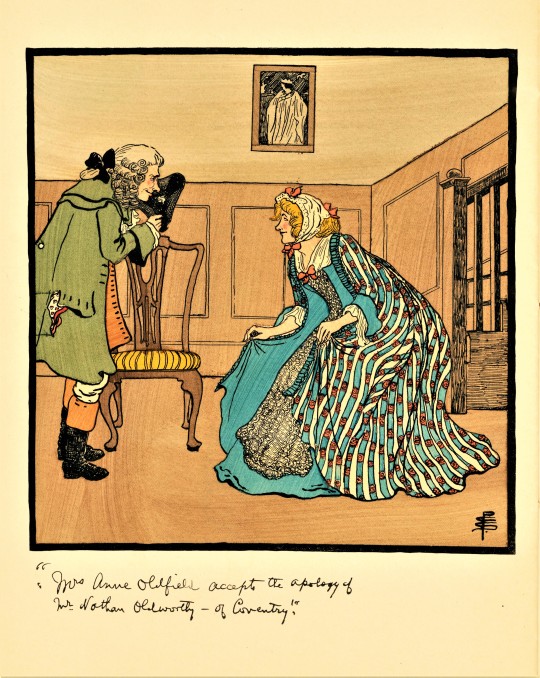





Milestone Monday
On this day, February 27 in 1847, heralded English actress Ellen Terry was born in Coventry, England, the third surviving child born into a theatrical family. Terry began performing as a child, and in 1878 she joined Henry Irving's company as his leading lady. For more than the next twenty years she was considered Britain’s leading actress. Irving and Terry had several highly successful tours in Britain and America. Terry made her American debut in 1883 followed by seven separate tours, including in Milwaukee on her sixth tour, where she played in The Merchant of Venice, Nance Oldfield, and The Bells, May 6-8, 1900 at the Davidson Theatre. In 1925, three years before her death at 81, she was appointed Dame Grand Cross of the Order of the British Empire by King George V, only the second actress to be created a dame for her professional achievements.
These images by British artist and illustrator Pamela Colman Smith are from Sir Henry Irving and Miss Ellen Terry, in Robespierre, Merchant of Venice, The Bells, Nance Oldfield, The Amber Heart, Waterloo, etc., published in New York by Doubleday & McClure Co. in 1899. The text is by Bram Stoker, the renowned author of Dracula. During his lifetime, however, he was better known as the personal assistant of Henry Irving and business manager of the Lyceum Theatre, which Irving owned.
View more Milestone Monday posts.
#Milestone Monday#milestones#birthdays#Ellen Terry#Henry Irving#actresses#English actress#Dame Grand Cross#Pamela Colman Smith#illustrations#Bram Stoker#Doubleday & McClure Co.#Lyceum Theatre
23 notes
·
View notes